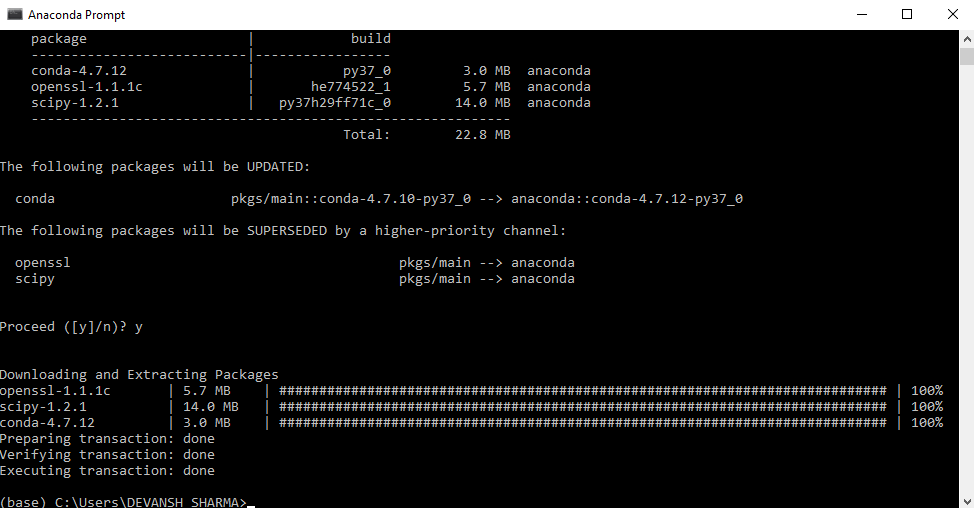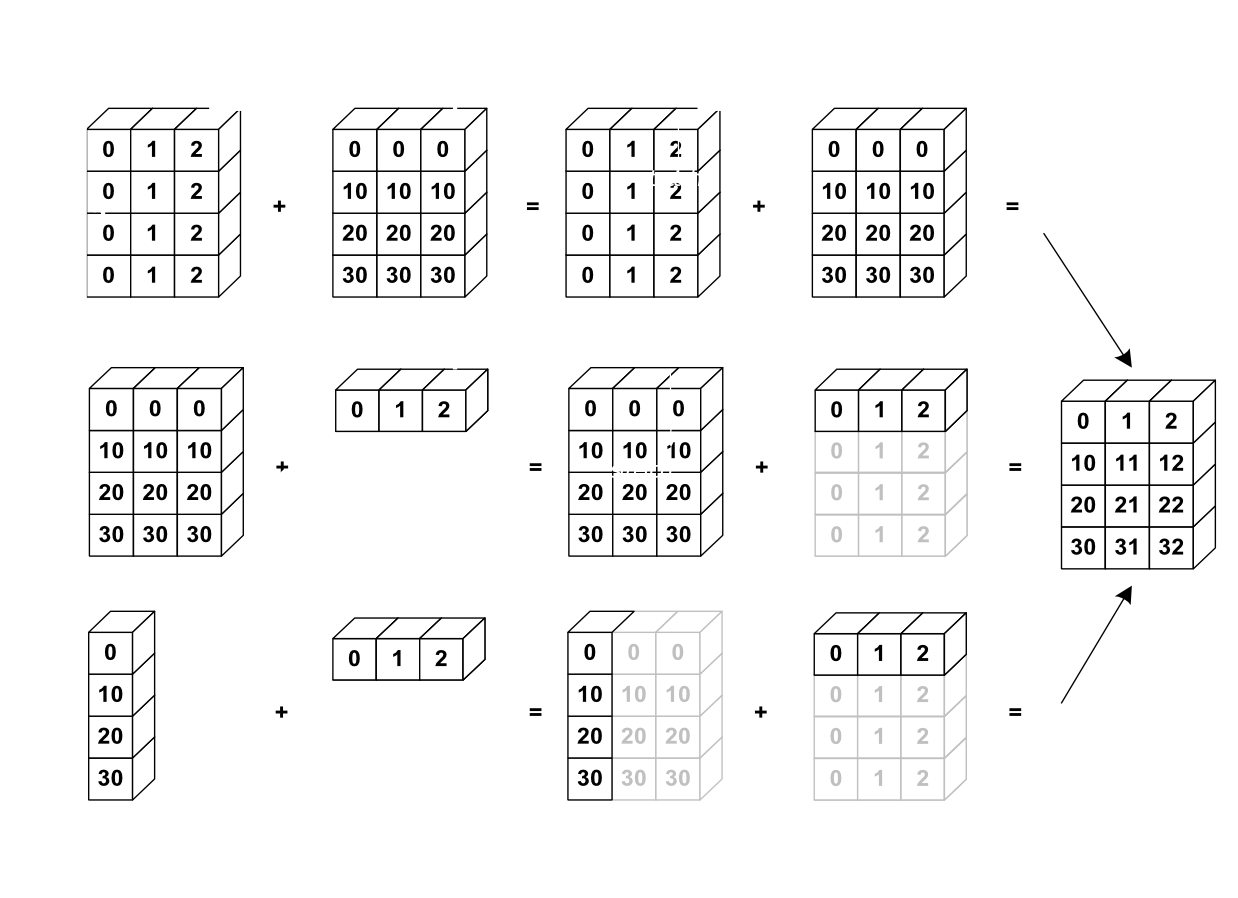Download the graphical macOS installer for your version of Python. RECOMMENDED: Verify data integrity with SHA-256. For more information on hashes, see What about cryptographic hash verification? Double-click the downloaded file and click continue to start the installation. Answer the prompts on the Introduction, Read Me, and License screens. Numpy is a very popular library for easily creating single, multidimensional array and matrices. It has a large collection of the mathematical function for performing an operation on these arrays. Most of the new Programmers are unable to install numpy properly. Installing Matplotlib on your Mac or Windows Laptop First install Python 3.x: Even if you have an older version of Python, e.g., Python 3.2, on your laptop, you can still install a newer version, e.g., 3.5 or 3.6. On your Windows machine download and install the latest Python 3 Release from Python Release for Windows.
Official source and binary releases¶

For each official release of NumPy and SciPy, we provide source code (tarball),as well as binary wheels for several major platforms (Windows, OSX, Linux).
Install Numpy
Project | Available packages | Download location |
|---|---|---|
NumPy | Official source code(all platforms) andbinaries for Windows,Linux and Mac OS X | |
SciPy | Official source code(all platforms) andbinaries for Windows,Linux and Mac OS X | SciPy release page (sources) PyPI page for SciPy (all) |
Source code repository access¶
The most recent development versions of NumPy and SciPy are available throughthe official repositories hosted on GitHub.
Download Numpy For Python 3.7 Mac

To check out the latest NumPy sources:


To check out the latest SciPy sources:
Build instructions¶
Build instructions for SciPy can be found in its documentation.The latest version can be found at:https://docs.scipy.org/doc/scipy-dev/reference/building/index.html
Third-party/vendor package managers¶
Below is a partial list of third-party and operating system vendor packagemanagers containing NumPy and SciPy packages.

Download Numpy For Mac
These packages are not maintained by the NumPy and SciPydevelopers; this list is provided only as a convenience. Thesepackages may not always provide the most up-to-date version of thesoftware, and may be unmaintained.
IMPORTANT: If you experience problems with these packages (especiallythose related to installation/build errors), please report the problem tothe package maintainer first, rather than to the NumPy/SciPy mailing lists.
Distribution | NumPy Packages | SciPy Packages |
|---|---|---|
numpy-py27,numpy-py35 | scipy-py27,scipy-py35 | |
py-numpy, | py-scipy, | |
python-numpy,python-numpy-devel | python-scipy,python-scipy-devel |
Download Numpy For Python 2.7
Nearly every scientist working in Python draws on the power of NumPy.
NumPy brings the computational power of languages like C and Fortran to Python, a language much easier to learn and use. With this power comes simplicity: a solution in NumPy is often clear and elegant.
Quantum Computing Statistical Computing Signal Processing Image Processing 3-D Visualization Symbolic Computing Astronomy Processes Cognitive Psychology QuTiP Pandas SciPy Scikit-image Mayavi SymPy AstroPy PsychoPy PyQuil statsmodels PyWavelets OpenCV Napari SunPy Qiskit Seaborn SpacePy Bioinformatics Bayesian Inference Mathematical Analysis Simulation Modeling Multi-variate Analysis Geographic Processing Interactive Computing BioPython PyStan SciPy PyDSTool PyChem Shapely Jupyter Scikit-Bio PyMC3 SymPy GeoPandas IPython PyEnsembl cvxpy Folium Binder FEniCS NumPy's API is the starting point when libraries are written to exploit innovative hardware, create specialized array types, or add capabilities beyond what NumPy provides.
Array Library Capabilities & Application areas Dask Distributed arrays and advanced parallelism for analytics, enabling performance at scale. CuPy NumPy-compatible array library for GPU-accelerated computing with Python. JAX Composable transformations of NumPy programs: differentiate, vectorize, just-in-time compilation to GPU/TPU. Xarray Labeled, indexed multi-dimensional arrays for advanced analytics and visualization Sparse NumPy-compatible sparse array library that integrates with Dask and SciPy's sparse linear algebra. PyTorch Deep learning framework that accelerates the path from research prototyping to production deployment. TensorFlow An end-to-end platform for machine learning to easily build and deploy ML powered applications. MXNet Deep learning framework suited for flexible research prototyping and production. Arrow A cross-language development platform for columnar in-memory data and analytics. xtensor Multi-dimensional arrays with broadcasting and lazy computing for numerical analysis. XND Develop libraries for array computing, recreating NumPy's foundational concepts. uarray Python backend system that decouples API from implementation; unumpy provides a NumPy API. TensorLy Tensor learning, algebra and backends to seamlessly use NumPy, MXNet, PyTorch, TensorFlow or CuPy. NumPy lies at the core of a rich ecosystem of data science libraries. A typical exploratory data science workflow might look like:
- Extract, Transform, Load: Pandas, Intake, PyJanitor
- Exploratory analysis: Jupyter, Seaborn, Matplotlib, Altair
- Model and evaluate: scikit-learn, statsmodels, PyMC3, spaCy
- Report in a dashboard: Dash, Panel, Voila
For high data volumes, Dask and Ray are designed to scale. Stable deployments rely on data versioning (DVC), experiment tracking (MLFlow), and workflow automation (Airflow and Prefect).
NumPy forms the basis of powerful machine learning libraries like scikit-learn and SciPy. As machine learning grows, so does the list of libraries built on NumPy. TensorFlow’s deep learning capabilities have broad applications — among them speech and image recognition, text-based applications, time-series analysis, and video detection. PyTorch, another deep learning library, is popular among researchers in computer vision and natural language processing. MXNet is another AI package, providing blueprints and templates for deep learning.
Statistical techniques called ensemble methods such as binning, bagging, stacking, and boosting are among the ML algorithms implemented by tools such as XGBoost, LightGBM, and CatBoost — one of the fastest inference engines. Yellowbrick and Eli5 offer machine learning visualizations.
NumPy is an essential component in the burgeoning Python visualization landscape, which includes Matplotlib, Seaborn, Plotly, Altair, Bokeh, Holoviz, Vispy, and Napari, to name a few.
NumPy's accelerated processing of large arrays allows researchers to visualize datasets far larger than native Python could handle.
